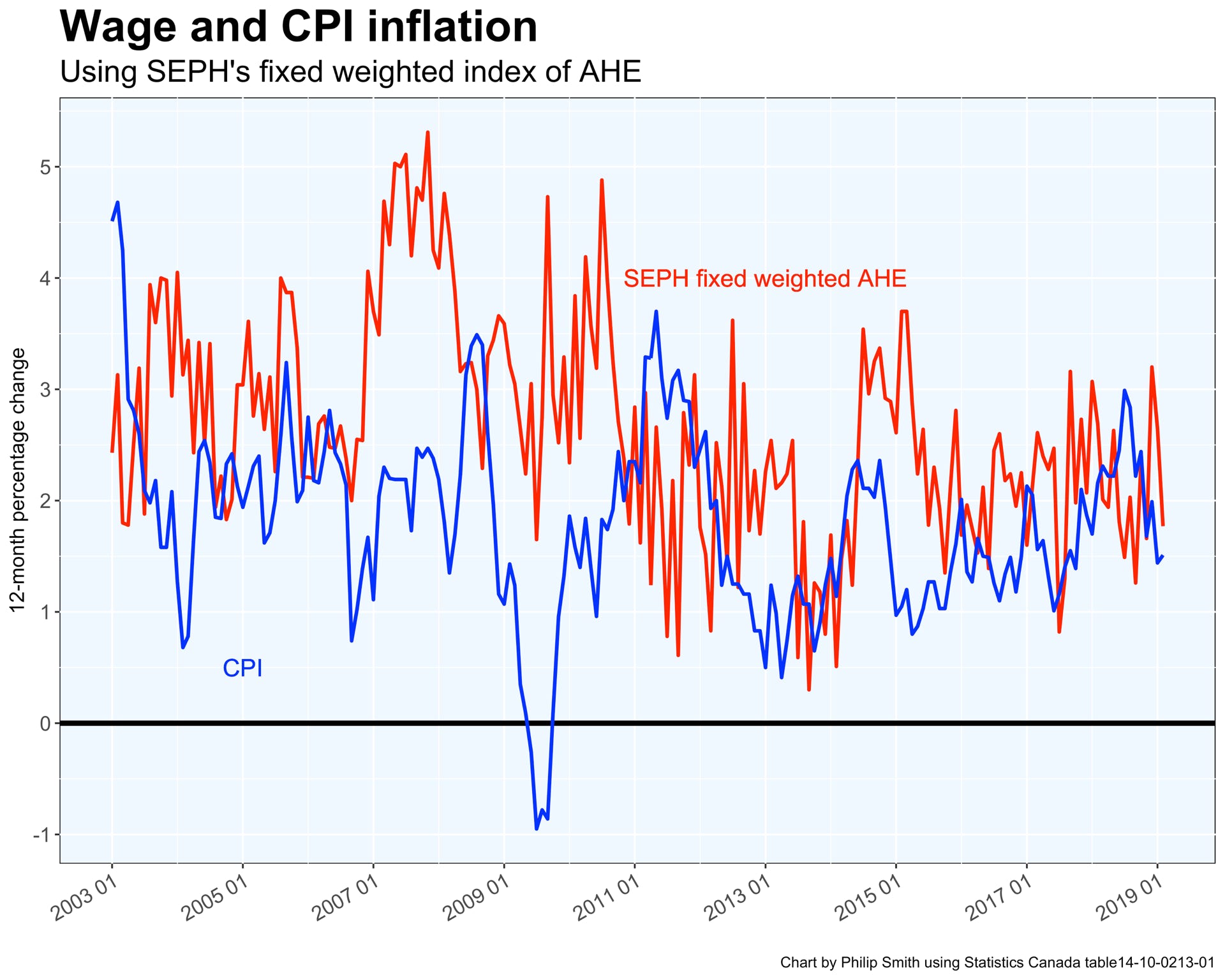Real wages
May 19, 2019
The best indicator of wage change in Canada is probably the fixed weighted index of average hourly earnings. It is part of Statistics Canada’s Survey of Employment, Payrolls and Hours (SEPH) program. The index holds the industrial composition of employment constant. This is advantageous because earnings are higher in some industries than in others, and cyclical or other changes in industrial composition can affect overall average earnings. For example, it could appear that wages are rising rapidly when in fact they are not, the apparent increase being attributable to a shift toward relatively high-pay industries and away from low-pay ones.
The chart immediately below shows the 12-month percentage change in this indicator of aggregate wages, minus the 12-month change in the consumer price index - that is, the 12-month percentage change in real wages. The 12-month lagging moving average, a smoothing transformation, is also shown. The chart indicates that real wages have been very flat recently. That's good news for inflation, but bad news for economic growth this year.
The second chart shows the same statistics - the 12-month percentage changes in average hourly earnings and the CPI - separately.


Household actual final consumption
March 22, 2019
Statistics Canada released data on "household actual final consumption" ($1.6 trillion) on March 20. This expanded definition of consumption includes consumption of products paid for by governments (mostly health care and education services).
The growth pattern for this expanded definition of consumption has been similar to that of the traditional one. However, the alternative concept is useful, for example, when comparing consumption per capita in different countries. Some countries may channel payments for certain products, like some health care and education services, through government rather than through the private sector. Taxes may be correspondingly higher in such countries and consumption as traditionally measured may be lower. Using the expanded "household actual final consumption" concept allows for fairer comparisons between countries.
